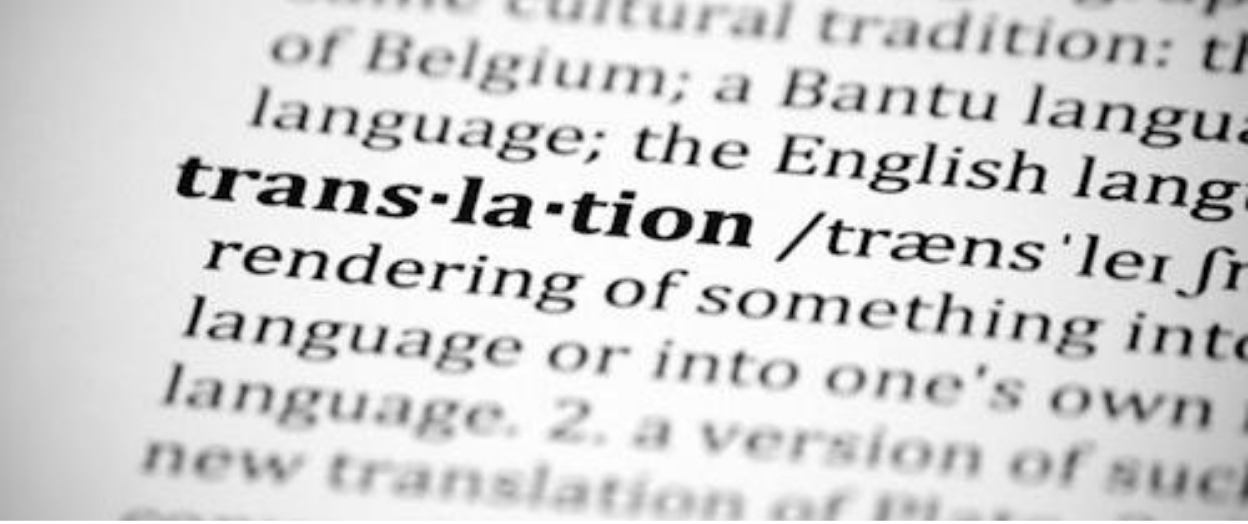The question of what defines a “good” translation is about as old as the discipline of translation itself. But whereas international quality standards have been established in many industries for decades, they are a rather recent development in the translation industry. The ISO 17100 standard is the first international quality standard of its kind for translators and was only introduced in 2015. It defines the minimum standards translation service providers need to adhere to in order to deliver quality translations.
Quality is in the eye of the beholder
Hand a text to 5 different translators, and you will get back 5 different translations. They may all be correct, but they will also all reflect each translator’s individual style and experience. So how can you define what a “good” translation is? As per the internationally recognised quality management standard ISO 9001, a product (and this may as well be a translation) is deemed to be good quality if it meets the client’s expectations. This means that depending on the circumstances, a text with a few typos may be good enough if the client is pressed for time. For others, however, terminological accuracy or a polished style may be of utmost importance. Unlike in a manufacturing process where the manufactured pieces either meet or do not meet the specifications, there is hardly a way to apply metrics that help measure translation quality.
How can an ISO standard help?
The ISO 17100 standard was specifically developed for the translation industry. The main purpose is not to define translation quality, but to establish a set of best practices, processes and minimum requirements that will help language services providers to deliver translations that meet their clients’ expectations. In theory, the standard is universally applicable to freelance translators, small agencies and large language service providers all over the world. A Peruvian client outsourcing a French-to-English translation to a provider of ISO 17100-certified translations based in Croatia can rest assured that the same processes are in place as in his native country. We shouldn’t forget, however, that for some language pairs, it may be virtually impossible for translators to fulfil the ISO requirements, especially when it comes to indigenous languages.
Key aspects of the ISO 17100 standard
The ISO 17100 standard sets forth requirements for four main aspects of the translation process:
- Project preparation
- Production processes
- Post production
- Data protection
Project preparation includes all activities before the actual translation process starts: client agreements, quotes, etc. This section also lists the minimum qualification requirements for translators, reviewers and other people such as subject matter experts that may be involved in the process.
The production processes section describes the individual steps of the translation process – the actual translation, revision, additional quality checks and final approval of the translation. Most importantly, the ISO standard asks for all translations to be reviewed by at least one other qualified translator.
Main aspect of the post production phase is a feedback process that helps to document any issues encountered during the production phase and to learn from them for future projects.
The ISO 17100 standard also specifically asks for a number of data protection measures. Translators and/or language service providers must take any relevant measures to ensure the protection of their clients’ and contractors’ data.
Certified translators – better translation quality?
Many translation companies advertise their ISO 17100-certified translations. In order to get certified, both individual translators (freelancers) and companies need to be audited by a supervising body in regular intervals to prove that all ISO 17100 requirements are met. The mere fact that a company is certified does not automatically guarantee high-quality translations as translations are still usually done, edited and evaluated by humans. However, chances to deliver the desired quality are much higher if a service provider follows the rules defined by the ISO standard.
Want to stay on top of the recent developments in the translation industry? Follow Master TCLoc on LinkedIn and Twitter for all the latest news!



